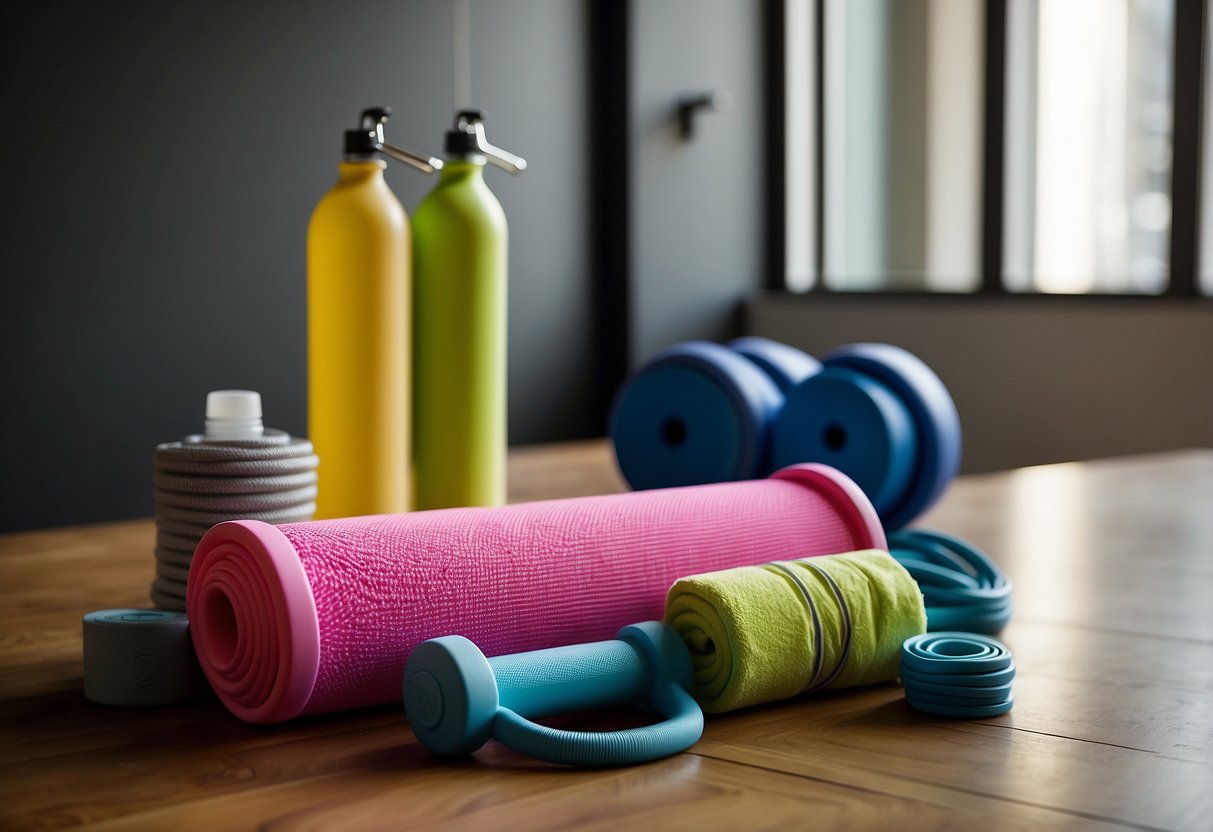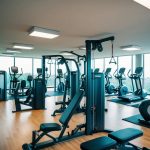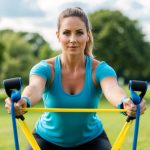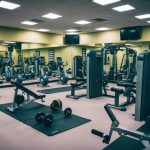
Prioritizing Safety and Comfort

Creating a home gym requires careful attention to safety and comfort to ensure effective and injury-free workouts. Proper flooring and safety equipment are crucial elements to address for a secure exercise environment.
Proper Flooring
Selecting the right flooring material is essential. Rubber mats or interlocking foam tiles offer both durability and cushioning. They help absorb impact and reduce noise, which can be beneficial if you live in an apartment or with others. Additionally, they provide a non-slip surface to prevent accidents.
Proper flooring also protects your equipment and the underlying floor. Heavy weights and machines can damage regular flooring. Ensuring the weight capacity of the floor material is suitable for your heaviest equipment is crucial. Clean the floors regularly to maintain hygiene and reduce the risk of slips and falls.
Safety Equipment and Accessories
Safety equipment such as mats, racks, and mirrors should be part of every home gym. Mats placed under heavy machinery can provide additional stability. Racks are essential for safely storing weights and other gear to prevent tripping hazards.
Mirrors help monitor your form, which is vital for injury prevention. They enable you to ensure you’re using the proper form during exercises. Additional accessories like wrist wraps or knee braces can provide extra support during high-intensity workouts.
Ensure all equipment is regularly inspected for wear and tear. Replace any faulty items immediately to maintain a safe workout environment. Regularly maintaining and cleaning your gym space further promotes safety and comfort.
Finding Budget-Friendly Solutions
When building a home gym on a budget, consider purchasing used equipment and exploring alternative shopping venues. These methods can help save money while still acquiring quality items.
Purchasing Used Equipment
Used equipment can be an excellent choice for budget-conscious home gym builders. Many people sell lightly used exercise equipment at significantly reduced prices. Platforms like Craigslist and Facebook Marketplace are popular for finding these deals.
One should inspect the equipment thoroughly before purchasing. Check for any signs of damage or excessive wear. It’s also a good idea to test the equipment if possible, ensuring it works correctly. Items like dumbbells, kettlebells, and weight plates often have long lifespans, making them particularly good candidates for second-hand purchases.
Another tip is to be patient and vigilant. Great deals might not appear immediately, but consistently checking listings can uncover hidden gems. Negotiating prices can often lead to further savings.
Alternative Shopping Venues
Exploring alternative shopping venues can also provide cost-effective solutions for outfitting a home gym. Discount stores, outlets, and warehouse sales frequently offer fitness equipment at lower prices. Seasonal sales and clearance events can be particularly advantageous times to buy.
Local gyms sometimes sell older equipment when upgrading their facilities. This can be a great way to obtain commercial-grade items at a fraction of the cost. Additionally, some schools or community centers may have surplus equipment available for purchase.
Online retailers often offer competitive prices, especially during sales events like Black Friday or Cyber Monday. Signing up for newsletters from fitness equipment websites can alert buyers to upcoming sales and promotions. Comparing prices across multiple sites ensures the best deal.
Assembling Your Home Gym
Starting with a solid foundation and gradually adding equipment enhances the efficiency and affordability of building a home gym. Consider the available space and prioritize essential items that provide versatile workouts.
Building the Foundation
Choose a suitable area in your home that can be dedicated to fitness routines. A spare room or a section of the basement are ideal choices. Ensure the floor can support the weight of your equipment and activities. Rubber mats can protect the floor and provide cushioning for exercises.
Next, select the basics. Dumbbells, resistance bands, and a stability ball are versatile and don’t require much space. A quality yoga mat is also essential for stretching and bodyweight exercises.
Lighting and ventilation impact workout comfort. Natural light is best, but adequate artificial lighting suffices. Ensure proper ventilation to keep the space fresh and inviting.
Adding Equipment Over Time
As fitness goals evolve, gradually invest in more advanced equipment. Start with essentials like a jump rope or kettlebells, which add variety without taking up much room.
Consider a foldable treadmill or a compact stationary bike for cardio. This approach maximizes space and manages costs effectively.
Weight benches and barbells can be added later, offering more strength training options. Keep an eye out for second-hand equipment deals online or at local gyms upgrading their inventory. Combining new and used pieces keeps the build economical and practical.
Incorporating Variety into Your Routine
Variety is essential in a home gym routine to engage different muscle groups and keep workouts interesting. It’s also important to adjust routines for different fitness levels.
Integrating Different Types of Exercises
Incorporate various types of exercises to create a balanced workout. Bodyweight exercises like push-ups, squats, and planks are effective and require no equipment. Resistance bands can be used to add difficulty to bodyweight exercises or for targeted muscle workouts.
Kettlebells offer a dynamic way to build strength and improve cardiovascular fitness simultaneously. Mixing in cardio workouts such as jumping jacks, burpees, or using a jump rope helps boost heart health. Combining these different exercises ensures all muscle groups are worked and can prevent workout monotony.
Adapting for Multiple Fitness Levels
Adjusting workouts for varying fitness levels is crucial. Beginners might start with light resistance bands or low weights on kettlebells, while more advanced individuals can increase the resistance or weight. A simple bodyweight exercise can be made more challenging by adding variations, such as a single-leg squat for someone more experienced.
Including different intensity levels not only accommodates mixed fitness levels but also keeps the routine challenging as one progresses. Everyone from beginners to advanced fitness enthusiasts can benefit from this adaptable and varied approach to home workouts.



